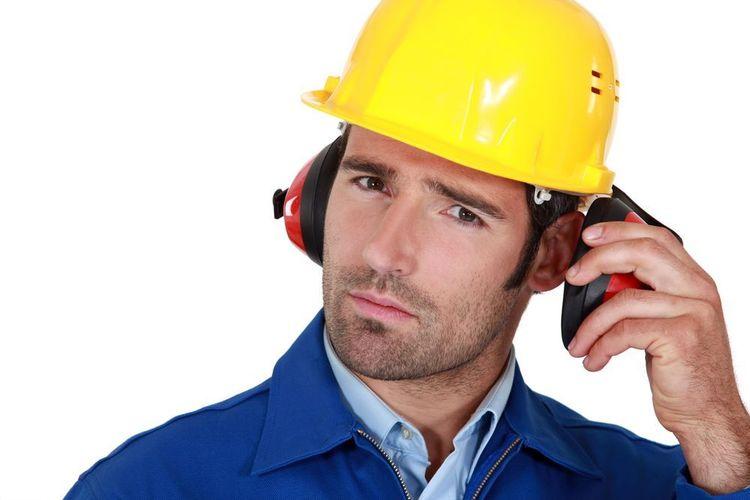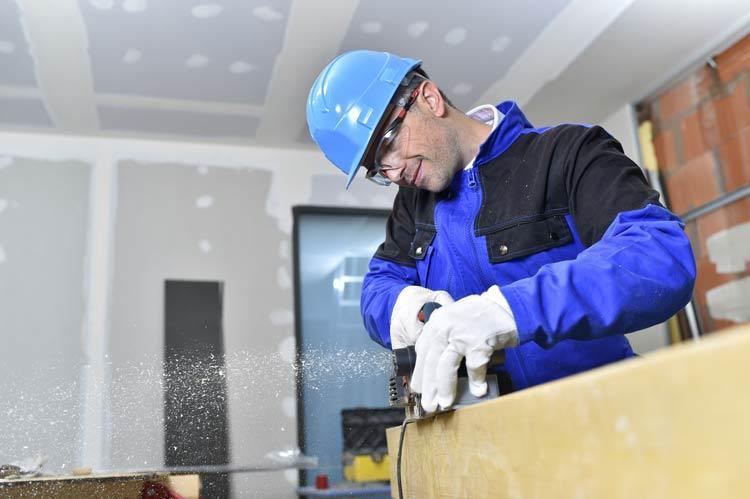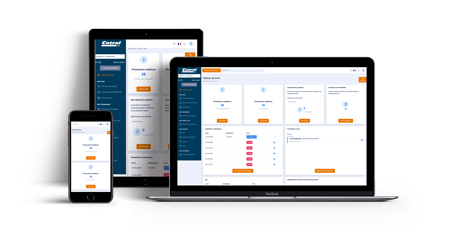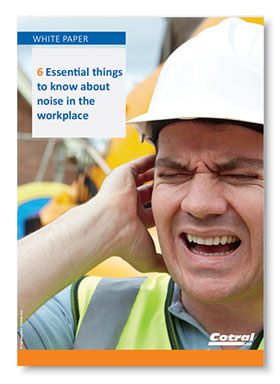Part of the family of Individual Hearing Protection Devices (IHPD) along with disposable ear plugs and moulded ear plugs, Ear defenders are placed over the ears and are connected by a head band that goes over the top of the head. They reduce the surrounding noise by way of the two shells that cover the ears of the user in order to insulate them. This type of IHPD has certain advantages:
- Ease of use: rapid protection with no obvious risks.
- Reusable and can even be shared if cleaned correctly: In a workstation the same headphones can be shared between a group of workers.
- Affordable: A simple set of headphones costs between €15 and €35 each, but some models can exceed a few hundred euros.
- High attenuation: Ear defenders attenuate between 27dB(A) and 35 dB(A).
With these kind of advantages it is easy to see why so many people turn to ear defenders for all types of work in noisy environments, whether for professional use (metallurgy, aviation, construction, etc.) or personal (gardening, DIY, concerts, etc.).

While it is undeniable that for a specific use this type of IHPD is sufficient, it shows its limits when it is necessary to be protected from noise throughout a work day without constraint.
Let's take a closer look at three key features that Personal Protective Equipment (PPE) must offer to be accepted and worn by your employees: comfort, communication and adaptability.
Is wearing Ear defenders comfortable?
PPE that is not comfortable won't be worn by your employees for the whole day at work. If your workforce feels irritated by it they will be tempted to remove their hearing protection. The risk of hearing loss is thereby considerably increased because an IHPD that is not worn 100% of time exposed to noise is not effective.
In terms of comfort, headphones start to show their limitations.
Weight of headphones
Made mostly of stainless steel, PVC and other resistant materials, a passive noise cancelling headset weighs on average between 200 and 600 grams depending on the level of attenuation . Indeed, the higher the theoretical attenuation, the greater the amount of foam or liquid needed for the insulation and the weight increases. This weight may seem low for one-time use and short-term, much less so at the end of an 8 hour day.
The so-called "active" anti-noise helmets, which have one or more microphones placed on the shells to amplify or eliminate in real time the surrounding noise, are all the more heavy because of this embedded technology. This increases when you want to communicate in noise by the addition of another microphone, batteries, etc.
A fragile balance between insulation and compression
To protect effectively from a noisy environment, an headphone must exert constant pressure on the ears of the wearer. Indeed, the slightest leakage significantly reduces the effectiveness of the protection, increasing the risk hearing damage. This is why it is not recommended to wear a headset over a hat.
Because of this permanent seal, a feeling of pressure can be felt after several hours of use. This uncomfortable sensation may cause the user to remove the headset for relief, again posing a risk to hearing.
Headphones in extreme noise
The use of headphones is often associated with use in extreme sound conditions. Indeed, it is the only protection that can be used as a second insolation in cases where a double hearing protection is necessary, i.e. when a single type of mounted IHPD does not allow to fall below the threshold of 80 dB (A).
On the other hand, in other types of extreme conditions such as in case of high heat, this method of protection of a noise-cancelling headphones impacts the comfort of the wearer. The pressure exerted by the pads on the ear leads to accumulations of moisture and heat that make long term use difficult due to perspiration.
Communication in Noisy surroundings
The ability to communicate in noisy environments is another essential requirement in the selection of an IHPD that is best suited to the needs of your employees.
In this category, anti-noise headphones have the quality flaws.
High attenuation and the need to communicate
As seen previously, Ear defenders attenuate between 27dB(A) and 35dB(A) and are suited to environments in which sound intensities are high. Without an integrated system, it is difficult to communicate normally without removing your helmet or putting in an earpiece.

According to the standard EN 458, if one of your employees removes his hearing protectors for just 2 minutes in an 8 hour workday, his protection loses 25% of its effectiveness. If he removes them for 2 hours, the loss of efficiency increases 75%.
Depending on the activity, not wearing hearing protection, even for a short time, can have serious consequences for hearing, as reported by a member of the ERIS 35 unit who used noise cancelling headphones before choosing Cotral Lab moulded plugs:
"During our firing range sessions, we equipped ourselves with anti-noise helmets to protect us, but there are often problems due to a shot at the wrong time. [...] During an exercise, a grenade exploded and since then, i have suffered from permanent tinnitus."
When we need to communicate, noise solutions aren't equal.
Adaptability
Giving your staff the same type of IHPD is like giving them all the same sized safety shoes: only a few people will be happy. To ensure that hearing protectors are accepted and worn by your employees they must accord with their individual needs.
Adaptability to a noisy environment
Using an IHPD that has too great an attenuation compared with outside noise can protect against harmful sounds, but equally it isolates the employee from sounds essential for safety, such as fire alarms, the approach of trucks and also from the machines on which he works.
Taking the example of an employee in a logistics warehouse, working in an noisy environment averaging 90dB(A) who has been given a set of noise cancelling headphones with an attenuation of 30dB(A) Because of the theoretical attenuation of his headphones, the employee perceives his surrounding noise at 60dB(A) and finds that he is overprotected.

It is therefore vital to understand the levels of noise to which your employees are exposed before choosing the best means by which to protect them.
Compatibility with other PPE
Although there are theoretical solutions for combining Personal Protective Equipment, in fact the compatibility between Ear defenders and other PPE can be problematic depending on the combination (noise-cancelling headphones + safety goggles, helmet + headband + mask, etc.).

In all cases the question of comfort arises in terms of prolonged use, with consequences on the adoption and use of PPE by your employees.
Conclusions of the study
For occasional use or in extreme conditions where communication is not a necessity, Ear defenders can be a viable solution and is preferable to disposable ear plugs because of their ease of use. On the other hand, for everyday use where communication is a determining parameter, it is better to consider another type of IHPD.
How do you choose the best hearing protection for your employees ?
Numerous solutions exist to protect your employees hearing. Weigh up all the options at your disposal and take steps to avoid workplace deafness in your company by downloading the Guide


